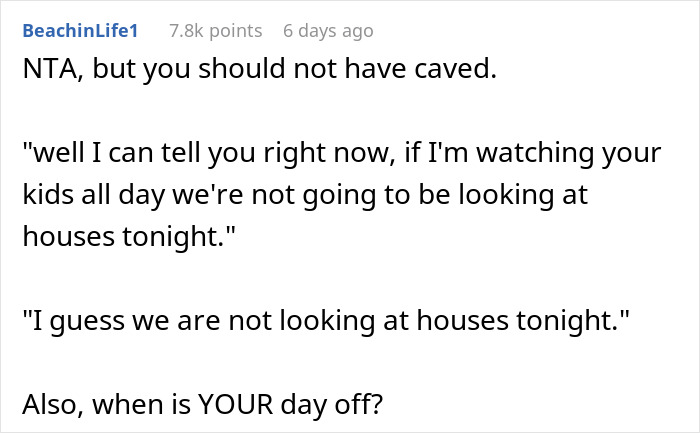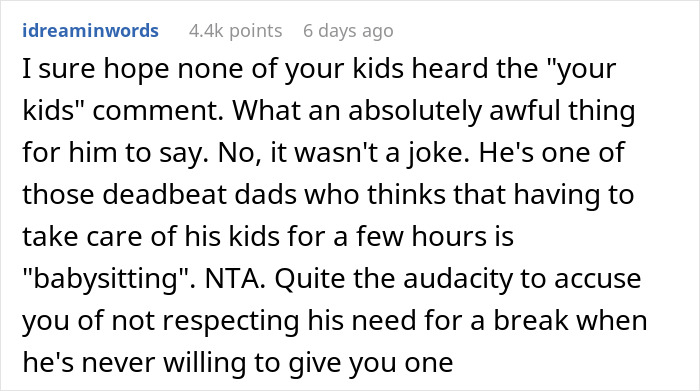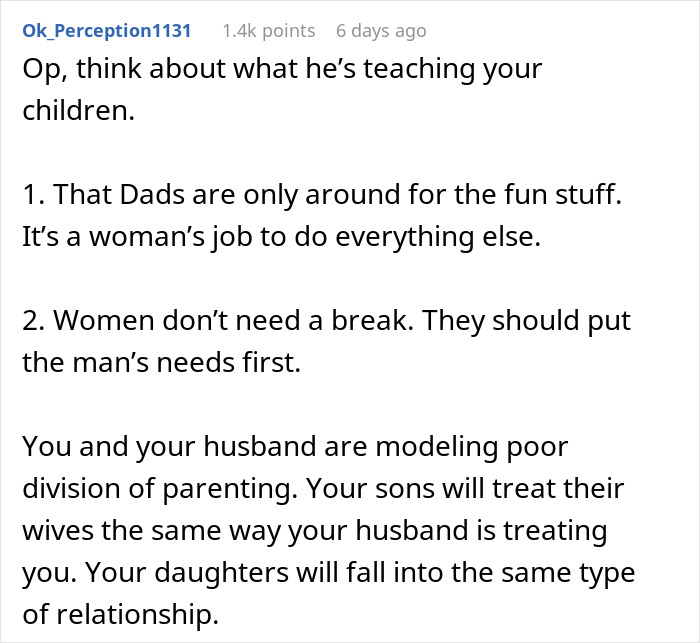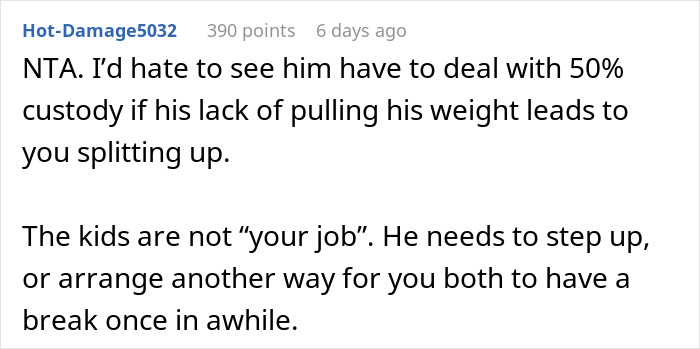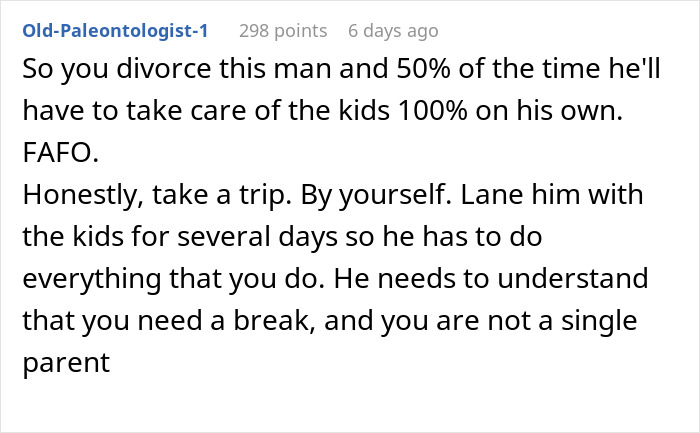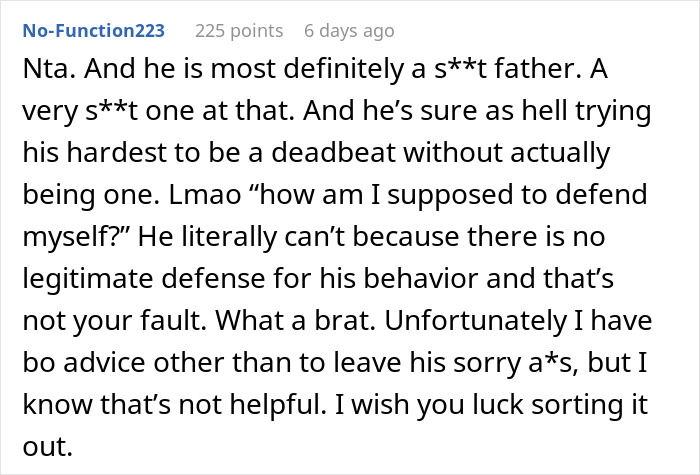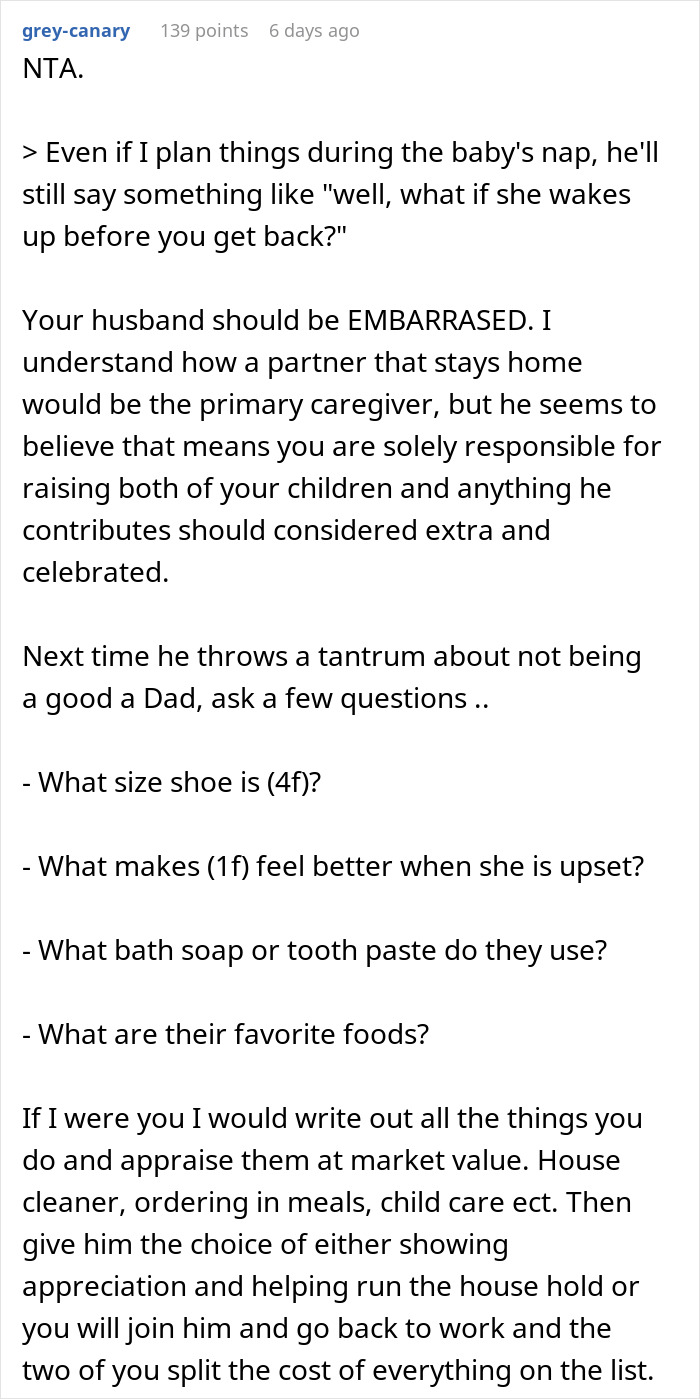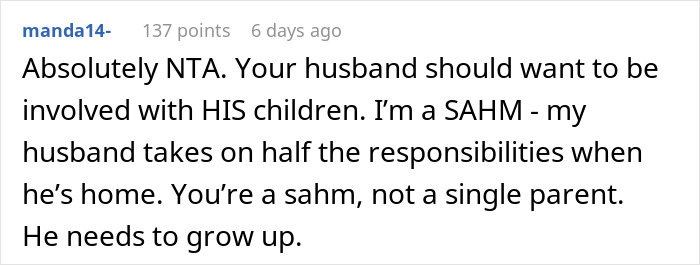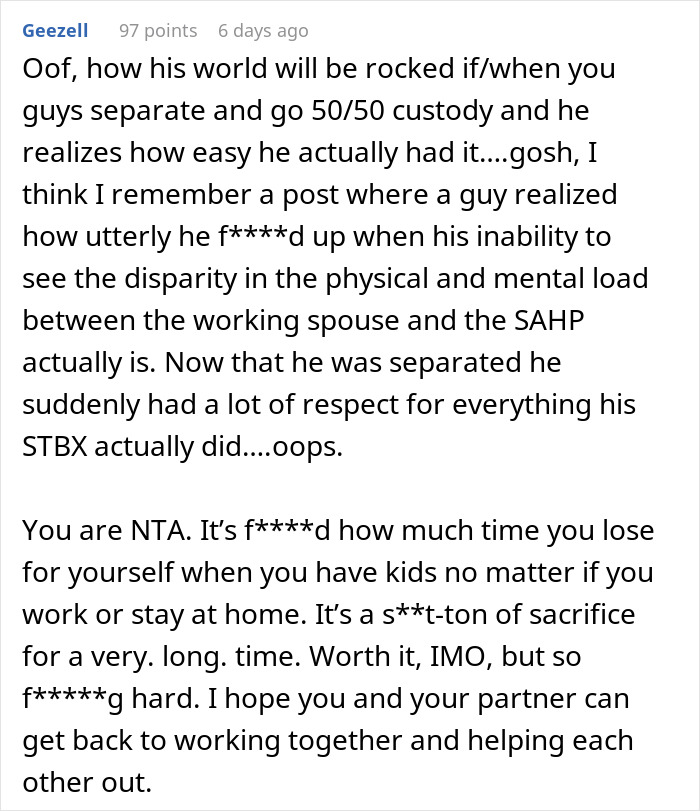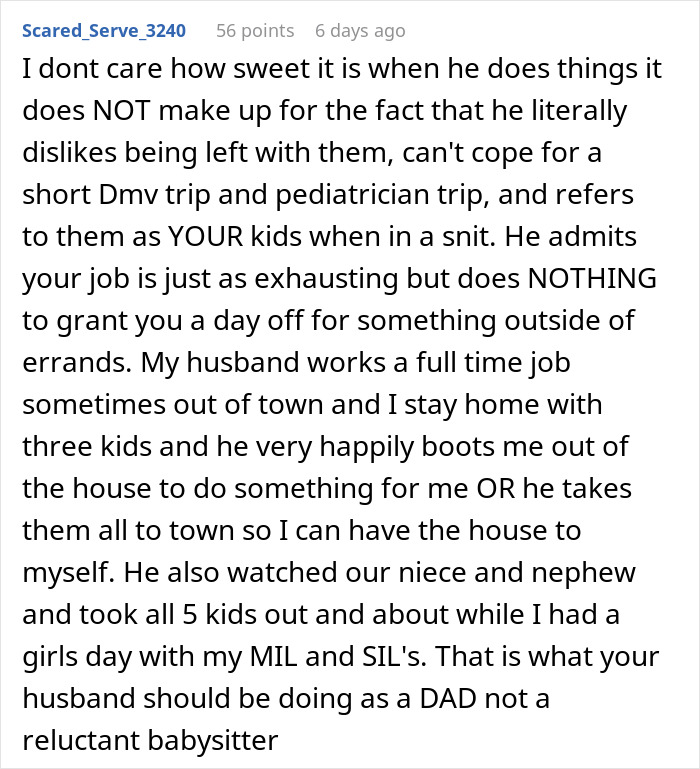A day off from work is for relaxing so you can come into work the next day refreshed and energized. At least, that’s what it is when you don’t have kids. Children change the game completely: you can forget about “me time” as the time at work is probably the only kid-free hours a day you’ll get.
But what about stay-at-home parents? Do they get a day off? This is the argument this mom made when she asked her husband to watch their kids as she ran an errand. The husband started whining about how he wanted his day off to be kid-free, prompting the wife to explode with previously unexpressed resentment. After many accusations and some yelling, the mother started wondering if she was the jerk in this situation. So, she decided to consult with the Internet.
A couple got into a fight when a stay-at-home mom asked her husband to watch the kids while she ran an errand

The husband wanted to take the time to relax, but the wife couldn’t take the children with her
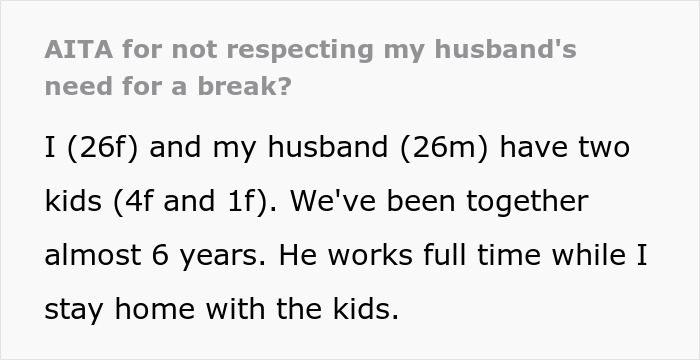
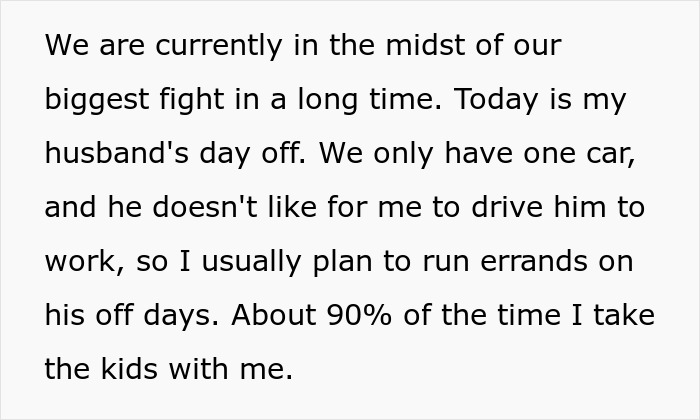
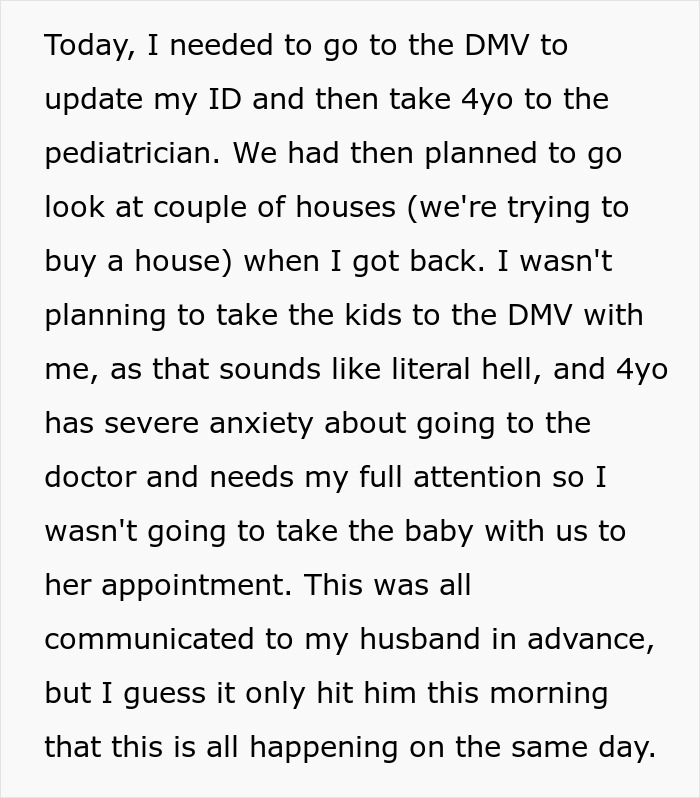
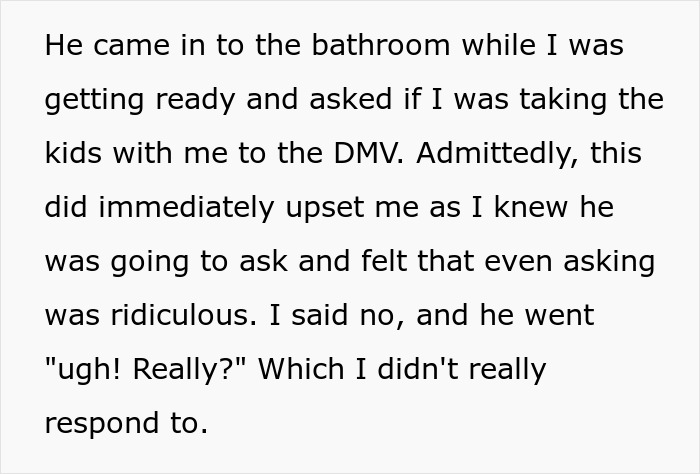
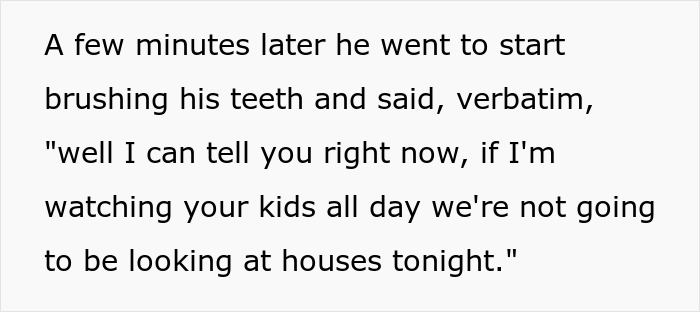


Image credits: sedrik2007 / envatoelements (not the actual photo)

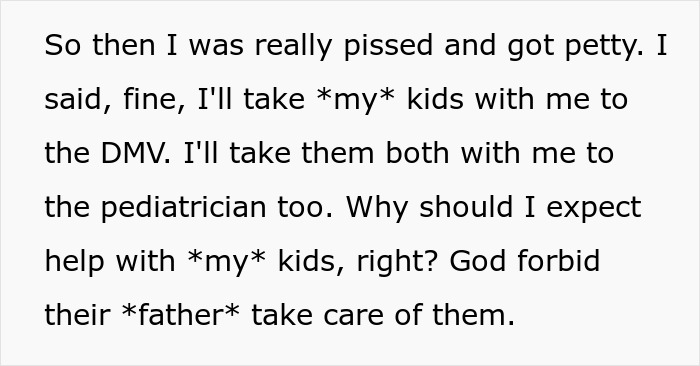
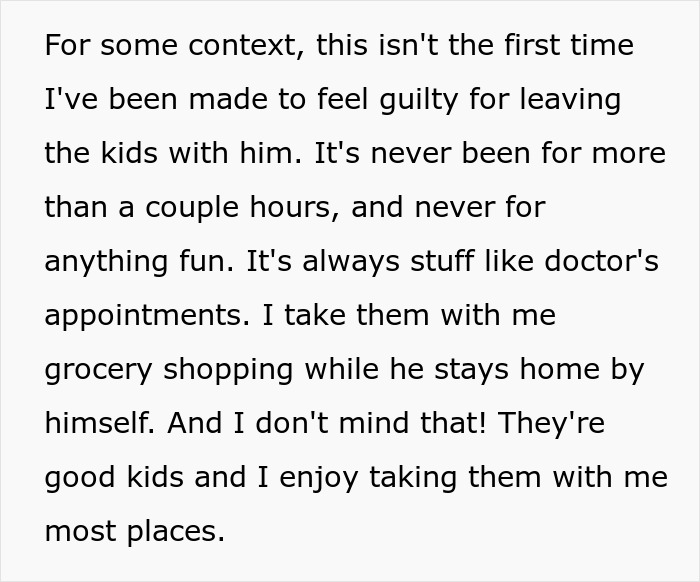
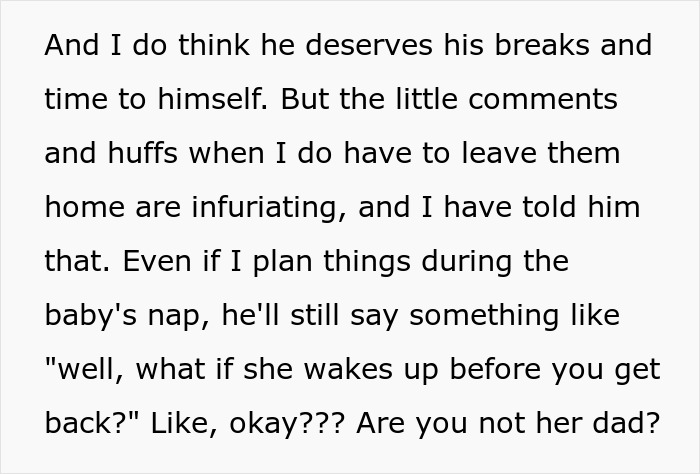

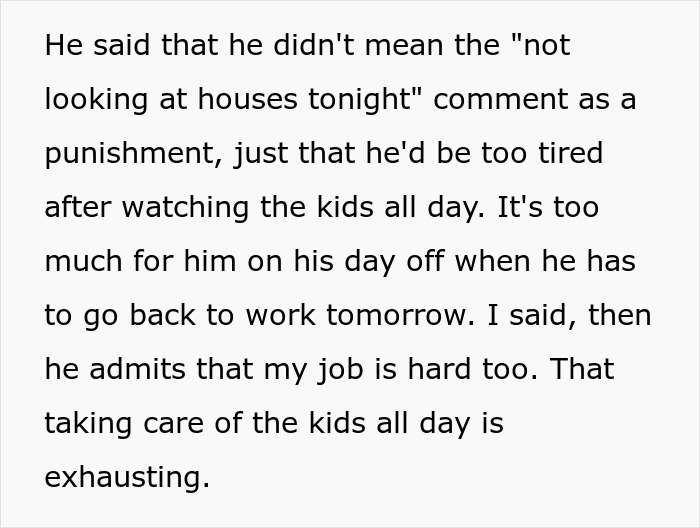
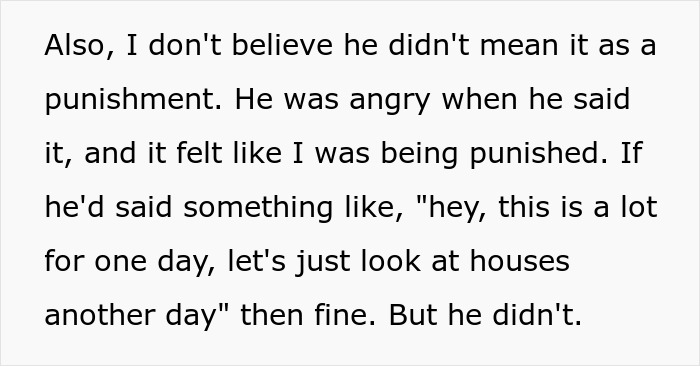

Image credits: Vailery / envatoelements (not the actual photo)
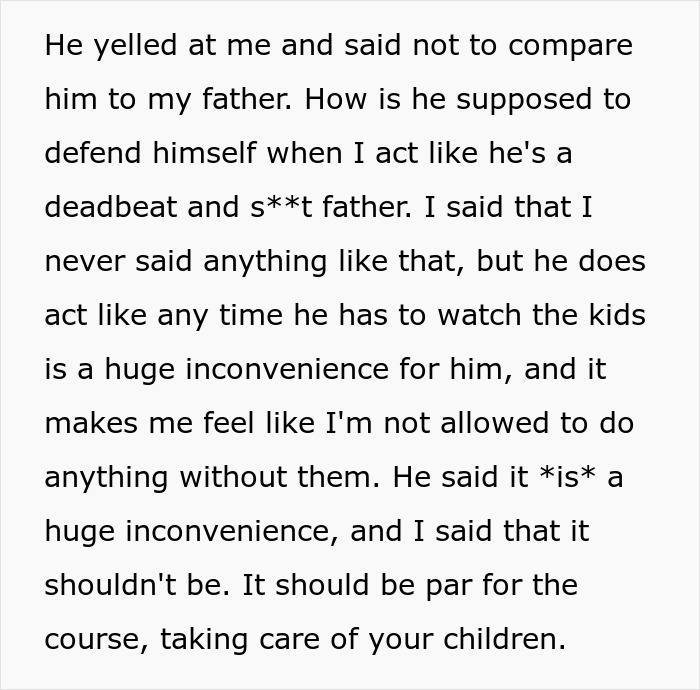


The mother summed up the situation in two sentences
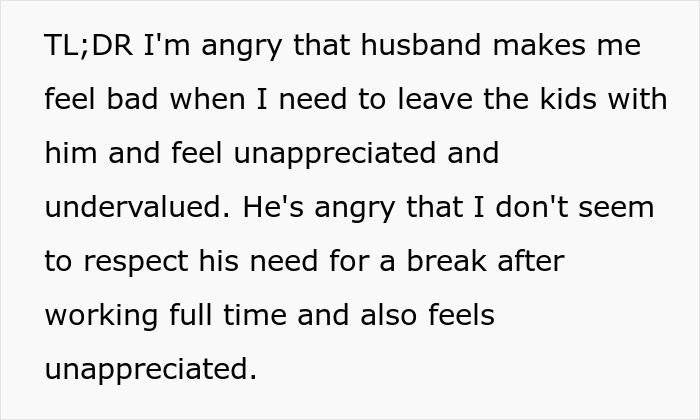
She also gave more information about her husband’s work conditions
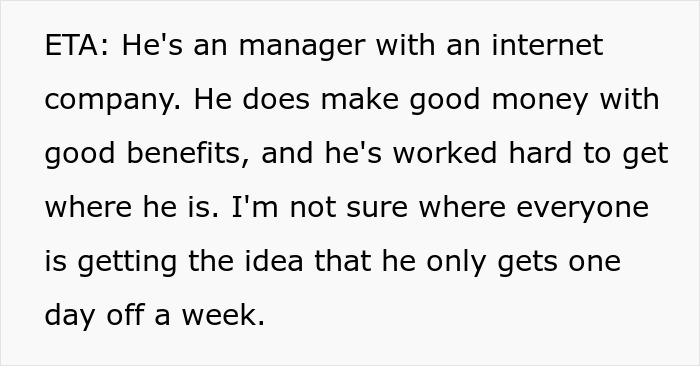
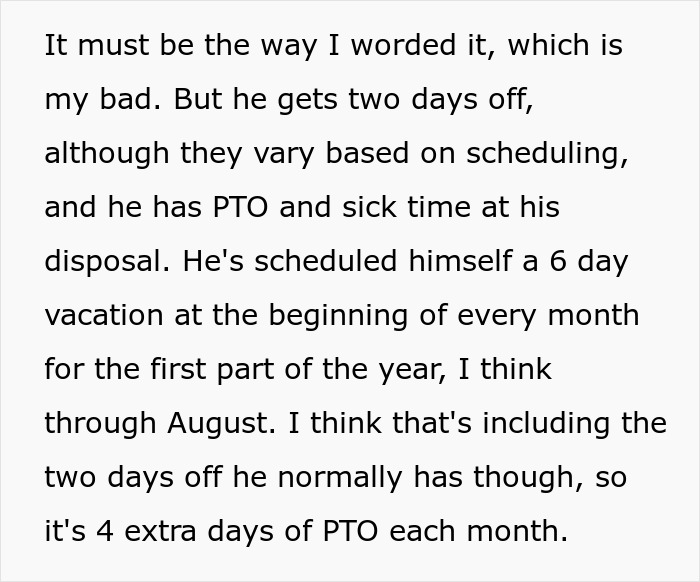
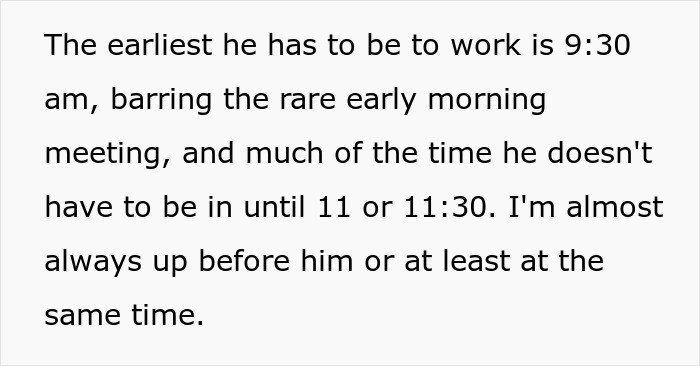
Image credits: Anonymous
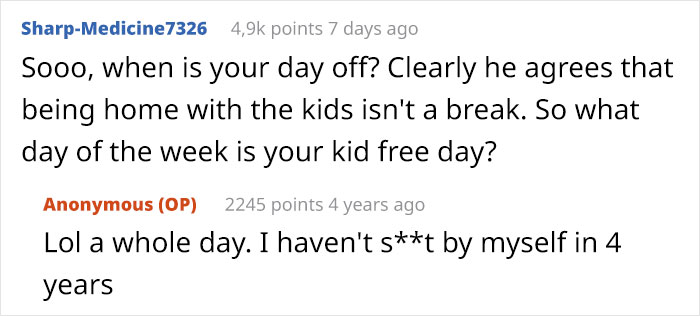
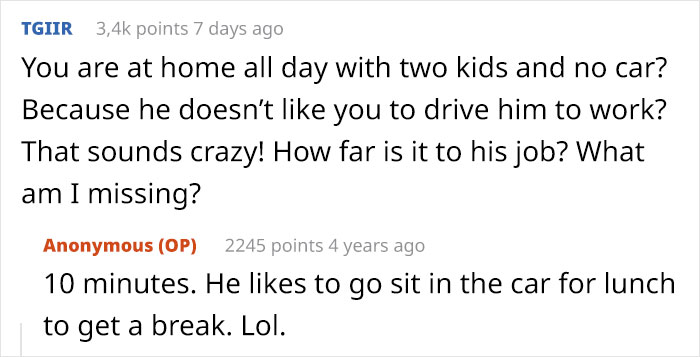
Working parents may not think so, but being a stay-at-home parent is a full-time job
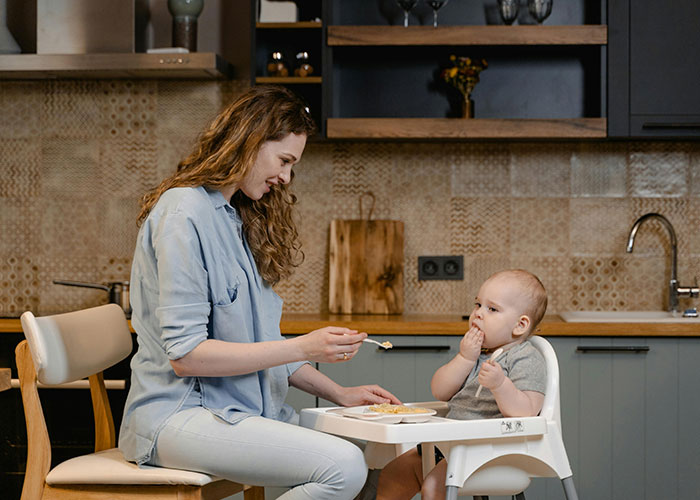
Image credits: MART PRODUCTION / pexels (not the actual photo)
Looking after two small children is hard, and the father in this story seems to acknowledge that. The problem perhaps stems from the fact that the father thinks he’s entitled to a day’s rest from work, while the wife is not.
Clinical Psychologist Samantha Rodman Whiten explains how stay-at-home parents usually spend their day and why it’s not as easy as working parents imagine. Some people think that childcare takes minimal effort: you feed them, you watch that they don’t crack their heads, and you put them to sleep.
In reality, Rodman Whiten writes that today’s parents have to do a lot more. They have to make sure the kids eat healthy and limit their screen time. They have to play with the kids, but the games have to be engaging and help with their development. That’s why stay-at-home parents might not have the time to vacuum, clean up, and make three meals a day.
Stay-at-home-parents (who are, let’s face it, mostly women) also have to deal with social isolation. Research shows that parents who stay home to care for children are at higher risk of poorer physical and mental health. They’re also more prone to mental health issues such as anxiety and depression.
A 2012 Gallup poll revealed that stay-at-home mothers who don’t work at all report feeling sadness or anger. Employed moms, in turn, are practically as well-off emotionally as working women who do not have children.
Rodman Whiten also points out how tiring spending all day caring for children can be. “Work is intellectually challenging and not physical,” she writes. “SAHMing is the reverse, and [it] is exhausting as a result.”
So it’s understandable that the stay-at-home parent might need a break. It seems that the mother in this story doesn’t get time off being a SAHM. And if the father really wanted a break from the kids, the parents could’ve considered leaving the kids with another family member or hiring a nanny for the day.
Having one parent stay at home can positively benefit the children

Image credits: Kindel Media / pexels (not the actual photo)
Not all parents have the luxury to stay at home and take care of their kids, but research shows that having a stay-at-home parent helps the child’s development. A 2014 study showed that the benefits of having one parent at home can help a child’s education up to high school. Children aged 6 and 7, however, saw the biggest advantages.
When a child spends their preschool years at home rather than in a kindergarten, they tend to have fewer behavioral problems. Research shows that kids feel more stressed when they’re in a daycare setting. Staying at home and having a parent take care of them reduces that stress.
Many parents choose to be a SAHM or a SAHD so they can have better control over their child’s upbringing. They want their children to intentionally spend more time with family members. The Pew Research Center found that SAHMs spend 18 hours a week with their children, while working moms spend 11.
Taking care of a child at home can also be cheaper than daycare. The average weekly daycare cost in the U.S. in 2024 is reportedly $321. And 54% of parents said that waitlists for daycare are becoming longer.
Whatever the parents decide, they should make this decision together and respect their roles. Parents are, after all, a team, and they should act like one, especially where their children are concerned.
People said the mom was not the bad guy and called out the husband’s entitled behavior
